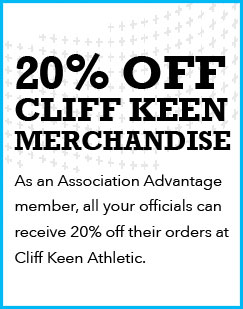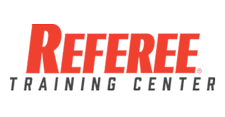By Carl Smith
Obstacles can be overcome by an officials association board if it is comprised of reasonable people who truly want the association to succeed and the membership to benefit from the decisions made by the board. That leaves out dictators, career politicians, etc.
The board needs to be made up of working people who have been in the trenches and still have a valid idea of what’s going on. You want to get something accomplished? There are different methods leaders use.
Option 1: Have everyone in complete agreement.
Now, that may sound naïve to some, but it can happen. Before you present something to the board for approval, the responsibility lies on you to do your homework and gather support before the actual presentation. Use your association members and your board members as indicators of how “popular” your idea might be. If most of the feedback is blowback, back away.
When you approach those individuals with an idea, have your “pros” ready to discuss, but if you want genuine honest feedback, you better have something to write with so you can get the “cons” also. You really would be naïve if you thought every idea you had will be perfect out of the box. By using friends and veterans, they’ll know that your intent is good, even if you may not have the idea all together yet.
They may also have knowledge of similar ideas that have been tried in the past, why they did or didn’t work and maybe some alternate methods to strengthen your idea. Your idea has to make sense and truly be for the good of the association if you want it to gain traction and move forward.
Option 2: The majority rules.
The “majority rules” option should be used only if the optimum first approach fails. The reason you have an advisory board is to govern your association. Sometimes you’ll run into a board member that feels it’s his or her “duty” to object to everything at first, in principle. “But, what if?” is the approach. If you’re involved at the board level for any time at all, you’ll likely run into someone like that.
Don’t waste a lot of time and energy trying to convince the board member of the validity of your idea. Give them the general outline at the board meeting with everyone else. When the negativity rears its ugly head, let it go. Life is too short to be frustrated by people with no vision, and people who say no just because they like to say no, not because they have a better idea. Go with the majority and pass the idea.
Option 3: Do a “hostile takeover.”
Warning: That method is never recommended, but you need to be aware of it in case someone tries it on you. It rarely works, but if you have a small board, you only need to add a few votes to get a majority margin. Intimidation or political pressure can be methods used in some officials associations. If someone is trying to rush something through a vote, that should be a red light for you and other board members. Slow down, observe and investigate the issue. Find out not just the stated reasons for the change, but also any underlying, hidden reasons.
Making changes to your association policies, procedures and bylaws are a necessary part of growth. You don’t want your group to be stagnant. It’s important to get something done. In order to take positive steps to achieve the changes, your board needs to work together and do what’s best for the majority of the membership. If you’ve got an agreeable board and can be unanimous on decisions, that’s great. The changes don’t just magically happen though. Like most good things in life, they take planning and hard work.
Carl Smith, Anchorage, Alaska, is a former treasurer and assigner for the Anchorage Sports Officials Association.





